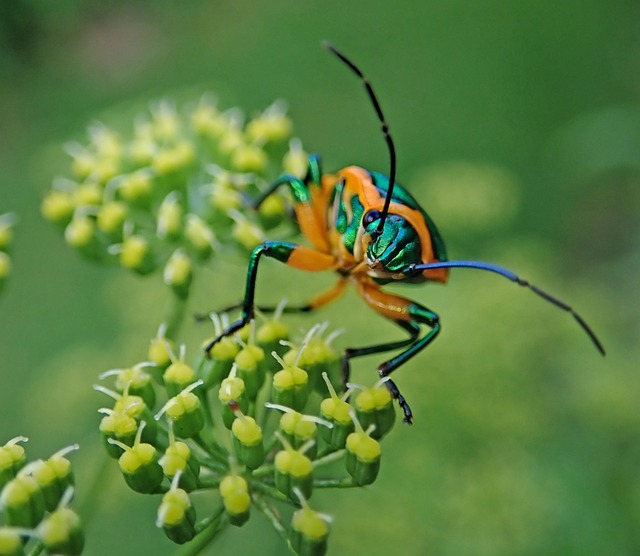Pest control products offer diverse, tailored solutions for professional management, targeting various pests with active ingredients like synthetic chemicals or natural compounds. Formulations differ for residential and commercial uses, focusing on effectiveness and safety. Experts select treatments based on pest type, understanding key compounds (e.g., fipronil, bromfenvom). Eco-friendly options prioritize low toxicity and biodegradability. Targeted strategies are employed for specific infestations. Labels and safety precautions are vital for proper application of any treatment, ensuring the best outcomes—from termite to cockroach control—while minimizing environmental impact.
In the realm of pest management, professionals leverage a robust arsenal of products to ensure maximum effectiveness. This article delves into the expert application of pest control products, providing insights into their active ingredients and roles. We explore various types, from termite treatments to bed bug solutions, guiding readers through professional application techniques for optimal results. Moreover, we highlight eco-friendly alternatives, demonstrating that sustainable practices can deliver powerful pest treatment solutions without environmental harm. Discover how these strategies revolutionize the industry, ensuring a balance between effective pest control and ecological preservation.
Understanding Pest Control Products: Active Ingredients and Their Roles
Pest control products are a crucial component of any professional pest treatment solution, offering effective methods to manage and eradicate various pests. Understanding the active ingredients within these treatments is key to maximizing their effectiveness. Each ingredient plays a specific role in targeting and eliminating unwanted intruders, from termites and rodents to bed bugs and cockroaches.
For instance, termiticides often contain synthetic chemicals that disrupt the nervous systems of termites, while rodenticides use attractants followed by powerful poisons to control rat and mouse populations. Eco-friendly pest solutions, on the other hand, may employ natural compounds like neem oil or essential oils, which have insecticidal properties without the harsh chemicals. Ant infestation treatments might include baits that lure ants and kill them through ingestion, while cockroach treatment services often utilize a combination of sticky traps, bait stations, and residual pesticides to ensure comprehensive coverage.
– Types of pest control products and their chemical compositions
Pest control products come in a variety of forms, each with its own chemical composition designed to target specific pests effectively. From liquid sprays to granular baits and dusts, these treatments offer professional pest control solutions for both residential and commercial properties. Understanding the ingredients and active compounds in these products is crucial for ensuring maximum effectiveness. For instance, termiticides often contain chemicals like fipronil or imidacloprid that target the nervous systems of termites, while rodenticides may include bromfenvom (a first-generation anticoagulant) to disrupt their blood clotting mechanisms.
When it comes to eco-friendly pest solutions, professionals opt for products with lower toxicity and biodegradability. These can include natural insecticidal soap, neem oil, or essential oils like peppermint and cedarwood, which repel pests without harmful chemicals. For ant infestations, baits containing protein attractants or boric acid can be highly effective. Cockroach treatment services often employ similar targeted approaches, using liquid sprays or gel bait stations to disrupt cockroach populations. Effective pest treatments require a tailored approach, considering the type of infestation and the habits of the pests involved.
– How active ingredients interact with pests to achieve effectiveness
Pest control products rely on active ingredients that interact with pests in specific ways to achieve effectiveness. These ingredients are carefully designed to target various life stages and behaviors of pests, ensuring efficient control. For instance, termiticides use chemicals that disrupt the nervous systems of termites, rendering them immobile and ultimately leading to their demise. Similarly, rodenticides attract rodents and then inhibit essential enzymes, causing them to bleed internally or suffer neurological damage.
In the realm of professional pest control, the expert application of these products is key. Professionals understand the behavior patterns of different pests, allowing them to choose the most effective treatments for specific infestations. They also consider environmental factors and follow strict safety protocols when handling chemical solutions, ensuring minimal risk to humans and pets while delivering top-notch eco-friendly pest solutions like termite treatment services, rodent treatment solutions, bed bug treatment options, and cockroach treatment services.
– Importance of understanding product labels and safety precautions
Understanding product labels and safety precautions is paramount when applying any pest control treatments, whether for professional pest control or DIY solutions. These labels provide vital information about active ingredients, application methods, and potential risks associated with each product. For instance, eco-friendly pest solutions often have different chemical compositions and application techniques compared to traditional chemical pesticides. Termite treatment services, rodent treatment solutions, bed bug treatment options, and ant infestation treatments all rely on specific formulations tailored to target these pests effectively without causing harm to humans or pets.
Professional pest control experts are trained to interpret labels accurately, ensuring that each pest treatment solution is applied safely and efficiently. They know when to use potent chemicals for severe infestations like cockroach treatment services, and when to opt for more gentle, environmentally friendly methods. This expertise maximises the effectiveness of pest treatments while minimising potential negative impacts, making it crucial for achieving lasting results in any residential or commercial setting.
In conclusion, the expert application of pest control products is key to achieving maximum effectiveness in addressing various pest issues. Understanding the active ingredients, their roles, and safety precautions, as discussed, is essential for professionals providing both effective pest treatments and eco-friendly solutions like termite treatment services, rodent treatment solutions, bed bug treatment options, and cockroach treatment services. By adhering to best practices, these professionals ensure not only the elimination of unwanted pests but also the preservation of a safer, healthier environment.
